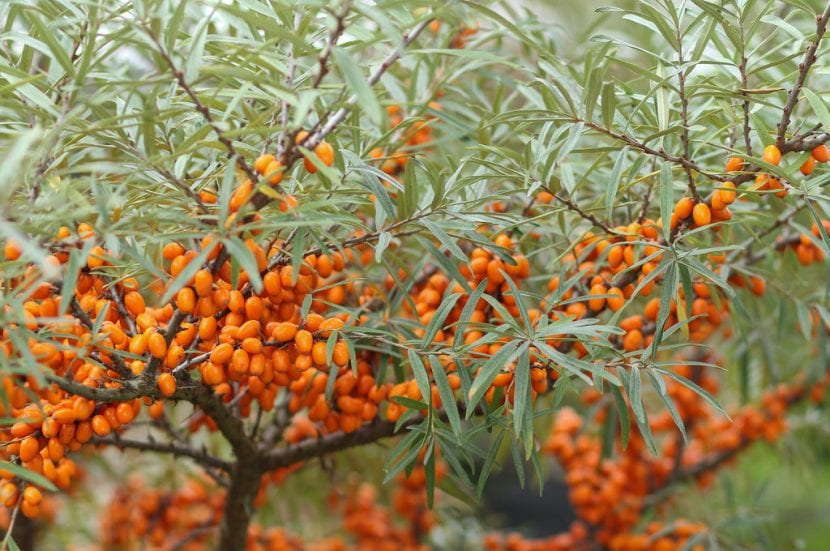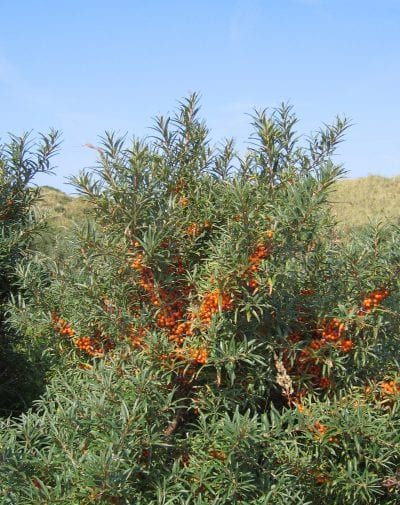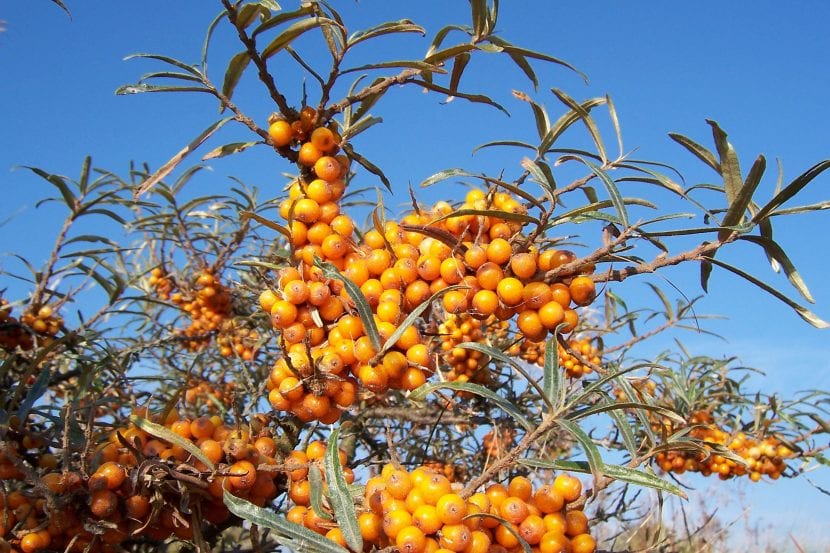
Image - Flickr / Maja Dumat
Sometimes a thorny bush is needed to have as a low hedge, or in a pot. But when looking for the most suitable species, it is not only necessary to look that it has thorns, but that it is also decorative; and of those you will find many ... but none like him Hippophae rhamnoides.
Why am I telling you this? Because it tolerates the salinity of the soil, which not everyone can. So that, Take a look at it? 😉
Origin and characteristics

Image - Wikimedia / Svdmolen
It is a deciduous and thorny shrub known as sea buckthorn, false hawthorn, arto, titinera or hat remover. It is native to Europe, Asia Minor, and the Caucasus, where grows on the shores of the sea, dunes and, ultimately, sandy soils, reaching a height of 1 to 3 meters. It produces lanceolate leaves, silver on the underside and greenish on the upper side. The flowers are grouped in clusters, they are green and small. And the fruit is an orange achene surrounded by a fleshy calyx.
Uses
La Hipopphae rhamnoides used as an ornamental plant, either in a pot or as a hedge. But, in addition, as edible for its fruit. In fact, jellies are made with it.
As if that were not enough, it is medicinal since it is rich in vitamin C, essential to have a healthy immune system. It also serves to reduce asthenia, and can be used against scurvy.
How do you take care of yourself?

Image - Wikimedia / Jürgen Howaldt
If you want to have a copy, we recommend that you provide it with the following care:
- Location: sea buckthorn must be outside, in full sun.
- Earth:
- Pot: universal growing substrate mixed with 30% perlite.
- Garden: prefers sandy soils.
- Irrigation: water 4-5 times a week in summer, and about 2 / week the rest of the year.
- Subscriber: in spring and summer it was advisable to fertilize every 15 days with organic fertilizers, such as guano for example.
- Multiplication: by seeds in spring.
- Rusticity: resistant up to -5ºC.
Did you know the Hippophae rhamnoides?